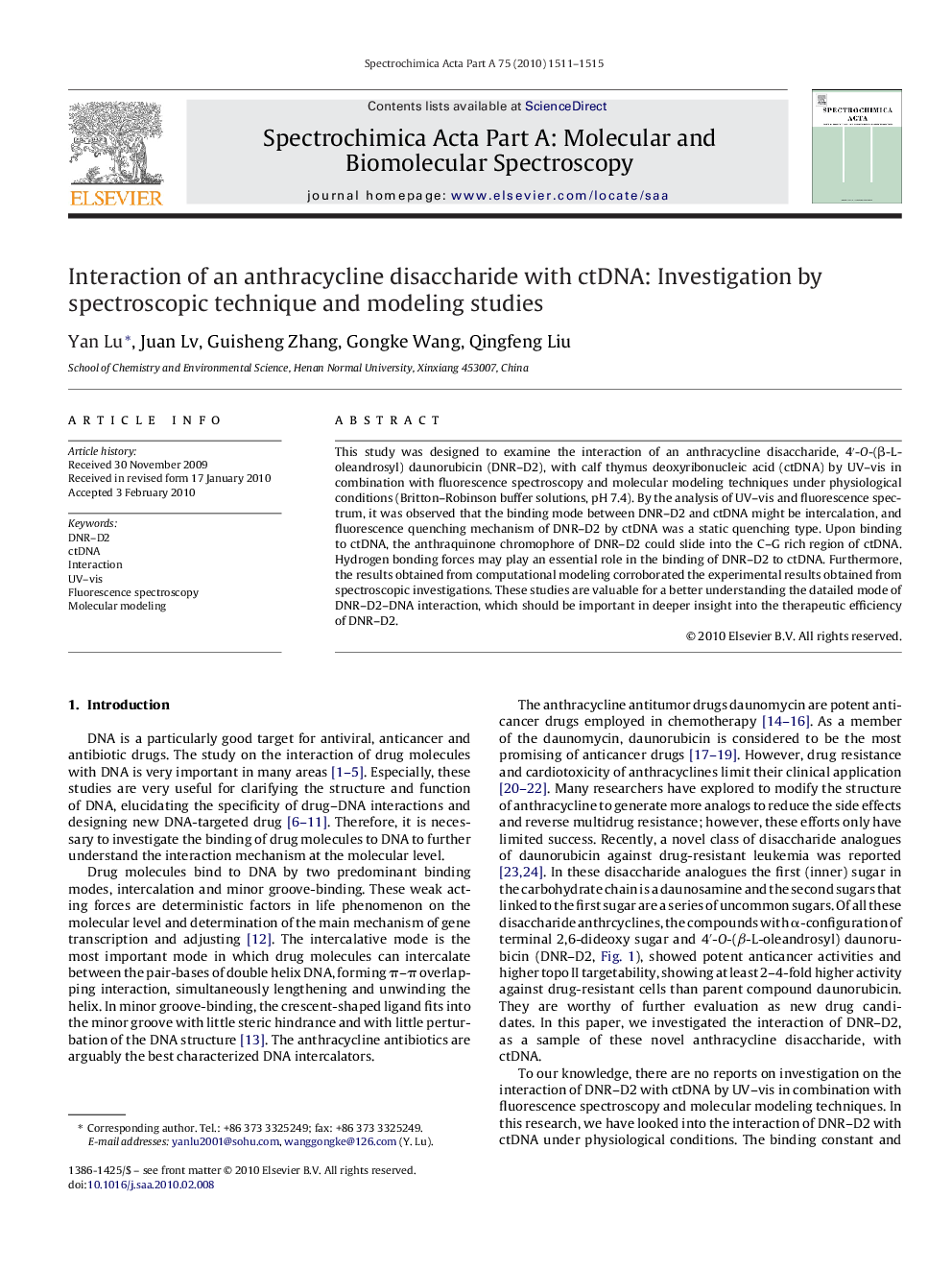| Article ID | Journal | Published Year | Pages | File Type |
|---|---|---|---|---|
| 1232551 | Spectrochimica Acta Part A: Molecular and Biomolecular Spectroscopy | 2010 | 5 Pages |
This study was designed to examine the interaction of an anthracycline disaccharide, 4′-O-(β-L-oleandrosyl) daunorubicin (DNR–D2), with calf thymus deoxyribonucleic acid (ctDNA) by UV–vis in combination with fluorescence spectroscopy and molecular modeling techniques under physiological conditions (Britton–Robinson buffer solutions, pH 7.4). By the analysis of UV–vis and fluorescence spectrum, it was observed that the binding mode between DNR–D2 and ctDNA might be intercalation, and fluorescence quenching mechanism of DNR–D2 by ctDNA was a static quenching type. Upon binding to ctDNA, the anthraquinone chromophore of DNR–D2 could slide into the C–G rich region of ctDNA. Hydrogen bonding forces may play an essential role in the binding of DNR–D2 to ctDNA. Furthermore, the results obtained from computational modeling corroborated the experimental results obtained from spectroscopic investigations. These studies are valuable for a better understanding the datailed mode of DNR–D2–DNA interaction, which should be important in deeper insight into the therapeutic efficiency of DNR–D2.
